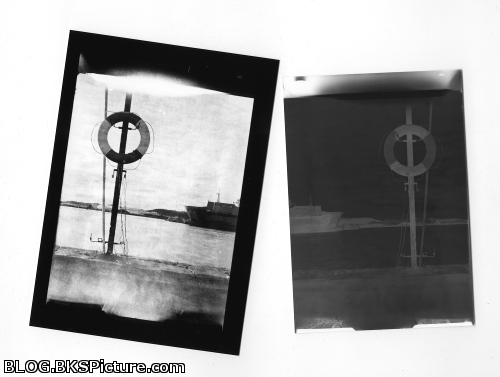 |
Darkroom
Contact Printing Contact printing is when you place a negative directly on your darkroom paper or other light sensitive materials. The light that expose the print will go thru the negative and make a image that are just as big as the negative. This was a common way to make a finish prints before the enlarger was invented or not readily available, but it's still used today. But mainly for those that works with large format cameras or if you want to make a proof sheet. It's very easy to do and you don't need much to get started. Place the emulsions on your negative and the emulsions on your darkroom paper face to face. So for example if you want to print on a darkroom paper. Place the paper so your emulsions is facing up. Make sure that you place the negative so the negatives emulsions is facing down into the darkroom paper. It will of course work the other way also but you will loose a lot of sharpness and your image will be mirrored. When you have sandwiched your paper and negative you what something that press these together. This need to be transparent so light can go thru it and normal glass works great. Most normal negatives usually don't need much force to keep flat and just the weight of the glass can be enough. I usually also place some weights on the glass to be on the safe side. And paper negatives can also often be more bent and need more force to stay nice and flat. Then you need a light source which will expose the darkroom paper. You usually want something that makes a even exposure on the image so you don't get one side darker than the other. I have access to a darkroom with a enlarger. A enlarger gives a nice and even light but I still have the lens on which I stop down a little to avoid vignetting. This makes it also easy to use any filters to control contrast etc. But any light source which will expose the paper will work. That was all for this, but I also have some related posts about darkroom use: Develop B&W Film or Paper Enlarging Print Basics Burning and Dodging Controlling Contrast Contact Printing Writing down what you are doing Print examples Want
to help me out?
Make my site known by sharing it with your friends and family. This helps and would be really appreciated, thanks!
My facebook page
|
 |


